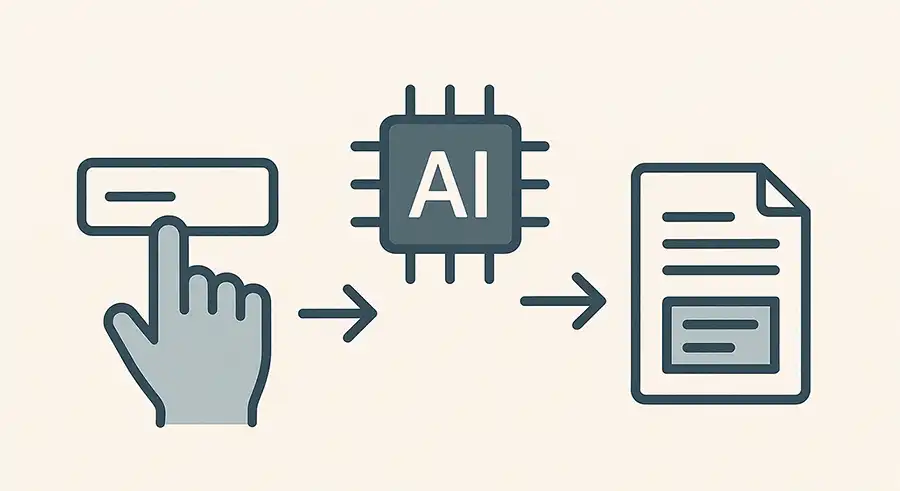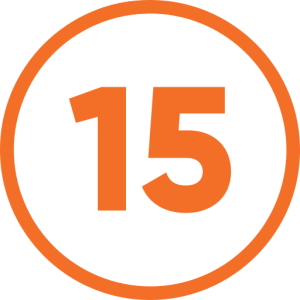Subtotal: $10,800.00

If you grew up turning the channel knob on the family TV, loading a game from a floppy disk, or waiting for dial-up internet to connect, the pace of change today can feel relentless. New Zealanders who lived through the early years of home computers, the arrival of email, and the slow march of mobile phones have already watched several technology waves reshape the way people work, shop, bank, and communicate. GPT is the latest of these shifts, but it is arriving in a way that feels different. This time the speed is faster, the visibility is clearer, and the impact reaches more parts of daily life than many expected.
Across the country, people are encountering artificial intelligence without actively choosing to. Email programs suggest sentences before users finish typing. Phones draft replies that sound suspiciously human. Google and Microsoft are reshaping their search tools to provide direct answers rather than lists of links. Banks, airlines, health providers, councils, and government agencies are using automated systems for common enquiries, from flight changes to insurance claims. Most of these systems operate quietly in the background, yet together they signal a shift that affects almost everyone, whether they work in an office in Auckland or run a small business in Te Awamutu.
For adults who built their careers, households, and routines before smartphones became essential, the sudden appearance of GPT can feel abrupt. Many people are comfortable with technology but do not want to become experts. They want tools that are simple, helpful, and understandable. They want to stay in control. They want explanations that feel grounded rather than technical. This is where GPT often surprises people. For all the big headlines and complicated descriptions, the tool itself is straightforward. You type an instruction and it produces text in return. It does not judge. It does not form opinions. It does not have intent. It follows patterns in language and produces a draft that you shape into a final version.
The WebCo often sees this moment of relief during training sessions. Once people understand that GPT is a writing assistant rather than a decision-maker, the resistance fades. The tool becomes less mysterious. In everyday practice, GPT is closer to a modern notepad than a futuristic robot. It helps with the early, messy stage of writing the first version of something. After that, the user takes over. This is a comfortable balance for many New Zealanders who do not want to rely on artificial intelligence but appreciate the time savings.
Those savings matter because so many New Zealand workplaces operate with small teams. A single person may handle admin, communication, planning, reporting, and customer contact. GPT fits naturally into this environment. In offices, it drafts reports, prepares meeting notes, tidies email communication, and shortens long documents into readable summaries. Public sector staff use it to shape briefings, clarify policy notes, and explain technical content to colleagues or community members. Healthcare workers use it to summarise research and prepare explanations for patients that avoid jargon and stay easy to understand. It does not replace clinical judgement. It reduces preparation time.
Teachers use GPT to plan lessons, adjust reading levels, explain classroom topics in plain language, and draft communication for parents. Principals use it for newsletters, board reporting, and staff coordination. Tradespeople use it for job descriptions, customer quotes, invoices, and clear explanations of what a job involves. Many say the tool helps them sound more confident in writing, even though the work itself has always been strong. In rural areas, GPT helps farmers prepare notes for seasonal workers, manage compliance tasks, write messages to suppliers, and put structure around busy periods. For families, the tool helps with school notes, weekly planning, meal ideas, and tidy explanations for children.
Because GPT is not the only artificial intelligence tool arriving at once, many New Zealanders want to know how it compares with the others. Google Gemini appears inside Gmail and Google Docs, which makes it a natural fit for schools and community groups. Microsoft Copilot sits inside Word, Excel, Outlook, and Teams, so workplaces that rely on Microsoft 365 find it arrives without much notice. Claude is steady and clear for long documents and appeals to policy workers, writers, and researchers. Perplexity feels more like a search engine. It is useful for finding information and checking sources but not designed for writing style or tone. GPT remains the strongest all-round tool because it handles tone, length, and audience with more flexibility.
People often discover GPT’s value first through email. New Zealanders can spend a surprising amount of time choosing the right phrasing for a follow-up message, or trying to explain something clearly without sounding abrupt. GPT helps shape these messages so they feel calm, polite, and clear. From there, most people move on to using GPT for summaries. Long reports become shorter documents. Research papers become key points. Meeting notes turn into action lists. For anyone who handles written material daily, this is often where the biggest time savings appear.
Another common use involves understanding complicated topics. KiwiSaver rules, ACC processes, tenancy laws, insurance policies, and banking terms can leave people feeling unsure. GPT explains these in plain English. It becomes a way to understand before checking official sources. People who once felt hesitant about asking questions now use GPT to build confidence before making decisions.
Planning is another area where GPT fits naturally. Holiday planning becomes easier when the tool can outline steps, estimate time frames, and provide reminders. Renovations become less daunting when the stages are broken down into manageable pieces. Parents juggling school events, work schedules, and household tasks often use GPT to bring order to overwhelmed calendars. Adults returning to study use it to design study plans that suit their pace.
With all of this, the limits still matter. GPT cannot check facts automatically, and it cannot interpret legal or medical information with certainty. It cannot handle sensitive personal details safely. It cannot replace professional guidance. It cannot know the user’s intent unless they explain it. Once people understand the boundary between support and decision-making, they use the tool more confidently. The boundaries keep the experience grounded and reduce the risk of over-reliance.
New Zealand is already seeing signs of how GPT and other artificial intelligence tools will reshape daily life over the next year. Search engines are moving toward direct answers, which means people searching for information will see clearer summaries rather than pages of blue links. This will change how businesses write their website content. Text will need to be structured clearly so artificial intelligence can interpret it. Workplaces will notice more automated support in Microsoft 365 and Google Workspace. Emails will become easier to write. Meeting notes will come together faster. Data analysis will feel more approachable as spreadsheets become more helpful.
Industries will adjust in different ways. Healthcare services will use artificial intelligence to create clearer written material for patients. Teachers will use it to prepare differentiated content for students who learn at different speeds. Farms will use it to organise compliance information and provide clear instructions for seasonal staff. Hospitality and retail will use it for menus, signage, and customer updates. Small towns may see strong benefits because artificial intelligence reduces the paperwork often carried by a few people in volunteer groups, sports clubs, and local businesses.
For adults who remember a world before smartphones, this upcoming shift does not need to be intimidating. They have already adapted to email, online banking, video calls, and touch screens. GPT follows the same pattern. It begins as something unfamiliar, then becomes something useful, then becomes something normal. Nothing about GPT requires people to become experts. The only requirement is comfort and familiarity, which grow naturally with use.
The WebCo supports New Zealanders through this period by focusing on real situations. Training covers everyday tasks, from email writing to planning to simplifying complex documents. It shows people how to use GPT safely and effectively inside the tools they already rely on. Rather than framing artificial intelligence as something people must catch up with, The WebCo treats it as a tool people can learn on their own terms.
Artificial intelligence is now part of New Zealand life. The arrival of GPT is a milestone in a long history of digital change. For adults who remember the way things worked before smartphones, this moment fits into a familiar pattern. A new tool arrives. It becomes practical. It becomes normal. GPT is not here to replace people. It is here to support the work they already do, in a way that feels simple, calm, and manageable. New Zealanders have adapted to many waves of technology in the past, and they will adapt to this one too. The WebCo is here to help anyone who wants to understand GPT without the pressure or confusion that often surrounds new technology.
LET'S TALK
GET IN TOUCH
"(Required)" indicates required fields


